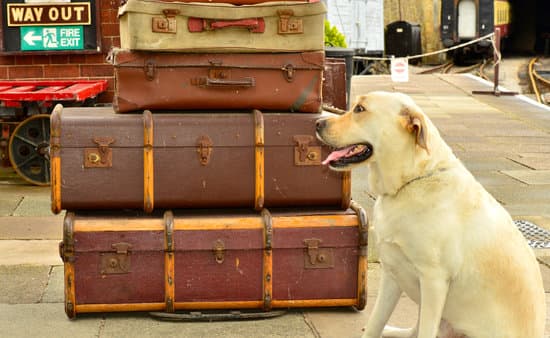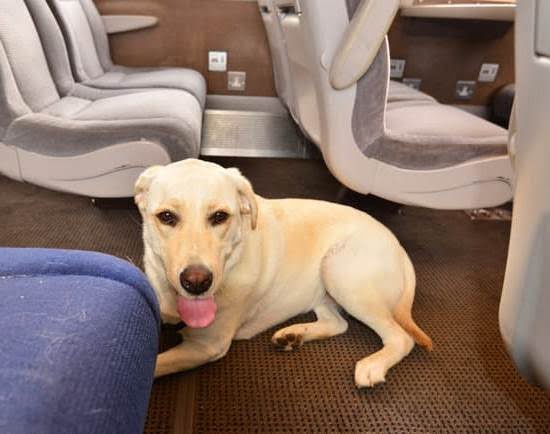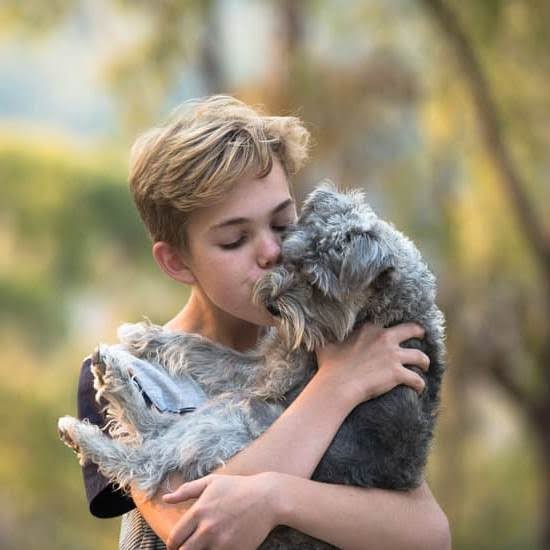Can you whistle train an older dog? Whistle training for dogs can be a highly effective method of communication, regardless of the age of your furry friend. Older dogs can benefit greatly from training, as it keeps their minds sharp and provides them with mental stimulation. In this article, we will explore the concept of whistle training for dogs and delve into the specific advantages of training older dogs through this method.
When it comes to training older dogs, there are unique challenges that may arise compared to training puppies. Older dogs may have established behaviors or habits that could make it more challenging for them to adapt to new commands. However, with patience and consistency, older dogs can still learn new tricks and commands through whistle training. Understanding these challenges is crucial in developing an effective training plan for your older pup.
Choosing the right whistle is essential when embarking on whistle training with an older dog. There are various types of whistles available, each with its own distinct sound and range.
It is important to select a whistle that is comfortable for both you and your dog, ensuring clear communication during training sessions. By considering these factors and understanding the benefits of whistle training, you can set yourself up for success in teaching your older dog new commands and strengthening your bond through training sessions.
Understanding the Challenges
Whistle training an older dog can be a rewarding experience, but it does come with its set of challenges. Unlike puppies, older dogs may have already established behaviors and habits that can be harder to change. Additionally, older dogs might have physical limitations or health issues that could affect their ability to respond to training. It’s important to approach whistle training with patience and understanding, knowing that it may take more time and effort to see results.
One of the key challenges when training older dogs is overcoming ingrained behaviors. Older dogs may have developed certain habits over the years that are deeply rooted, making it more difficult for them to unlearn these behaviors. However, with consistent training and positive reinforcement techniques, older dogs can still learn new commands and behaviors through whistle training. It’s essential to be patient and persistent while working with your older dog to help them adjust to the new training method.
Another challenge when whistle training an older dog is dealing with potential hearing loss or reduced hearing sensitivity. As dogs age, their hearing abilities can decline, making it harder for them to hear high-pitched sounds like whistles. In such cases, choosing a whistle with a lower frequency or volume level may be necessary.
Additionally, using hand signals along with the whistle commands can help your older dog better understand what is being asked of them. Adapting the training methods to accommodate any hearing impairments will ensure a successful whistle training experience for your beloved senior canine companion.
| Challenges | Solutions |
|---|---|
| Ingrained behaviors | Consistent training and positive reinforcement |
| Hearing loss | Choosing a suitable whistle frequency/volume and incorporating hand signals |
Choosing the Right Whistle
When it comes to whistle training an older dog, choosing the right whistle is essential for effective communication and successful training sessions. There are various types of whistles available on the market, such as pealess whistles, silent whistles, and electronic training whistles. Each type has its own advantages and considerations that can impact how well your older dog responds to the training.
Pealess whistles are a popular choice for dog training as they produce a consistent sound without relying on a moving part that may stick or wear out over time. On the other hand, silent whistles emit a high-frequency sound that is not audible to humans but can be heard by dogs, making them a useful tool for distance training.
Electronic training whistles offer versatility with adjustable tones and volumes, allowing you to customize the signal based on your older dog’s preferences and hearing abilities.
When selecting the best whistle for your older dog, consider factors such as your dog’s age, hearing ability, and temperament. It is important to choose a whistle that is comfortable for you to use consistently during training sessions and one that produces a clear, distinct sound that can grab your older dog’s attention effectively.
By carefully considering these factors, you can ensure that you have the right tool to support your whistle training efforts and help your older dog learn new commands with ease.
Overall, choosing the right whistle plays a crucial role in the success of whistle training an older dog. By exploring the different types of whistles available and selecting one that suits your older dog’s needs and abilities, you set yourself up for more productive and enjoyable training sessions.
Remember that patience, consistency, and positive reinforcement are key components of effective whistle training with an older dog, so take the time to find the perfect whistle that can aid you in building a strong bond with your furry companion through training.
Establishing Basics
Training older dogs can be a fulfilling experience, and whistle training is a great way to teach them new commands and strengthen your bond. When it comes to teaching basic commands like sit, stay, and come using a whistle, older dogs may require a bit more patience and understanding compared to puppies. However, with the right approach and consistency, you can achieve successful results in training your older dog.
To start whistle training your older dog with basic commands, it is essential to choose the right whistle. There are various types of whistles available, such as silent whistles or pealess whistles, each with its unique sound that can be used for different purposes. It’s important to select a whistle that suits your dog’s hearing range and is comfortable for you to use consistently during training sessions.
Once you have chosen the appropriate whistle for your older dog, you can begin establishing the basics commands such as sit, stay, and come. Using the whistle as a cue alongside verbal commands or hand signals can help reinforce the desired behaviors effectively. Here are some steps to follow when teaching your older dog these basic commands using the whistle:
- Start in a quiet environment with minimal distractions.
- Use the whistle as a cue followed by the verbal command or hand signal.
- Reward your dog with treats or praise when they successfully perform the command.
By incorporating positive reinforcement techniques and being patient with your older dog during training sessions, you can gradually see progress in their response to whistle commands. Remember to keep training sessions short but frequent to maintain their interest and focus. With dedication and consistency, you can effectively teach your older dog basic commands through whistle training.
Implementing Positive Reinforcement
Positive reinforcement is a key aspect of whistle training for older dogs. Using treats and praise can help older dogs understand and follow commands more effectively. When transitioning to whistle training, it may be helpful to use high-value treats that your dog particularly enjoys, as this can motivate them to respond to the sound of the whistle. In addition to treats, verbal praise in a happy and encouraging tone can reinforce good behavior during training sessions.
Consistency is crucial when implementing positive reinforcement in whistle training. Dogs thrive on routine and will respond better to training when expectations are clear and consistent. Make sure to always reward your older dog immediately after they successfully follow a command in response to the whistle. Over time, they will learn to associate the sound of the whistle with positive outcomes, making them more likely to comply with your commands.
It’s important to remember that every dog is different, so be patient and attentive when using positive reinforcement in whistle training. Some older dogs may take longer to learn new commands or behaviors, so tailor your approach based on your dog’s individual needs and preferences. By consistently using treats and praise along with the whistle during training sessions, you can build a strong foundation for effective communication and bonding with your older canine companion.
| Positive Reinforcement Tips | Effective Use of Treats and Praise |
|---|---|
| Use high-value treats that your dog enjoys | Reward immediately after successful command response |
| Provide verbal praise in a happy tone | Be consistent with rewards during training sessions |
Building Consistency
Consistency is key when it comes to whistle training an older dog. Just like with any form of training, establishing a routine and sticking to it will help your furry companion understand what is expected of them. By consistently using the whistle for commands and practicing regularly, your older dog can learn to associate the sound with specific actions. This predictability can make the training process smoother and more effective.
To build consistency in whistle training, consider implementing a structured schedule for training sessions. Set aside dedicated time each day to work on commands with your older dog. Whether it’s in the morning before breakfast or in the evening after dinner, having a consistent time for training can help both you and your dog get into a rhythm. Additionally, choose a quiet and familiar environment free from distractions so that your dog can focus solely on the training session.
In addition to setting a routine for whistle training sessions, consistency also extends to your use of commands and rewards. Ensure that you use the same cues each time you give a command with the whistle. For example, if you use two short blasts for “sit” and one long blast for “stay”, stick to these patterns throughout the training process.
Similarly, be consistent in rewarding your older dog with treats or praises immediately after they successfully follow a command given through the whistle. This reinforcement will help reinforce positive behaviors and motivate your dog to continue learning through whistle training.
Overcoming Obstacles
As with any training method, whistle training an older dog may come with its own set of challenges. Older dogs may have established behaviors and habits that can make training more difficult compared to puppies. However, with patience, consistency, and the right approach, these obstacles can be overcome. Here are some common challenges that may arise during whistle training with an older dog and solutions to address them:
Lack of Hearing or Sensitivity
One challenge that you might encounter when whistle training an older dog is diminished hearing or sensitivity to high-pitched sounds. Older dogs may have age-related hearing loss or simply not respond well to the whistle initially. To combat this issue, you can try using a more audible whistle or a different frequency that your dog can hear better. Additionally, seek guidance from a veterinarian to rule out any underlying medical issues affecting your dog’s ability to hear.
Resistance to Change
Another obstacle you might face when training an older dog is resistance to change. Older dogs may be set in their ways and find it challenging to adapt to new training methods or commands. In this case, it’s essential to introduce the whistle gradually and pair it with positive reinforcement techniques such as treats and praise. Be patient with your furry companion and provide gentle guidance throughout the training process.
Distractions and Lack of Focus
Older dogs may also struggle with distractions and maintaining focus during training sessions. They can get easily distracted by sights, sounds, or smells in their environment, making it difficult for them to concentrate on the whistle commands. To tackle this issue, choose a quiet and familiar environment for training sessions and start with short but frequent practice sessions to maintain your dog’s focus. Keep training sessions fun and engaging to prevent boredom or disinterest.
By addressing these common challenges proactively and adapting your approach based on your older dog’s individual needs and capabilities, you
Gradual Progression
When it comes to whistle training an older dog, gradual progression is key to ensuring success and building a strong foundation for obedience. While older dogs may require more patience and understanding compared to younger puppies, they are still capable of learning new commands and behaviors through consistent training. By taking a step-by-step approach and gradually increasing the difficulty of commands, you can help your senior canine companion develop new skills and strengthen your bond.
Step 1: Reinforcing Basic Commands
Before moving on to more advanced commands, it’s important to ensure that your older dog has a solid understanding of basic commands such as sit, stay, and come when signaled by the whistle. Start by using the whistle in conjunction with verbal cues and hand signals that your dog is already familiar with. This will help them make the association between the sound of the whistle and the desired command.
Step 2: Introducing Intermediate Commands
Once your older dog has mastered the basic commands with the whistle, you can start introducing intermediate commands such as heel, fetch, or lie down. Remember to break down these commands into smaller steps and reward your dog for each successful attempt. Consistency is key during this stage to avoid confusion and ensure that your dog understands what is expected of them when they hear the whistle.
Step 3: Shaping Desired Behaviors
As you progress with whistle training, focus on shaping specific behaviors that align with your training goals. For example, if you want your dog to stop barking on command or refrain from jumping on guests, use the whistle as a cue for these behaviors.
Break down complex behaviors into manageable steps and reward incremental progress to reinforce positive behavior. With patience and dedication, you can shape desired behaviors through whistle training and enjoy a well-trained older dog who responds reliably to your signals.
Celebrating Success
Whistle training an older dog may initially seem like a daunting task, but with patience, consistency, and the right approach, it is indeed possible to achieve great success. Older dogs may present unique challenges compared to puppies when it comes to training, but the benefits of investing time and effort into whistle training are truly rewarding.
Through this process, you not only work on teaching your dog commands and behaviors but also strengthen the bond between you and your furry companion.
One of the key aspects of whistle training an older dog is choosing the right whistle for effective communication. By selecting a whistle that suits your dog’s hearing range and preferences, you can ensure clearer signals and commands during training sessions. Establishing basics such as sit, stay, and come using the whistle lays a strong foundation for further training progress.
Positive reinforcement techniques play a crucial role in motivating your older dog and encouraging desired behaviors. By incorporating treats and praise into your training sessions, you can make learning more enjoyable for your canine friend.
As you embark on this whistle training journey with your older dog, remember to celebrate every small milestone achieved along the way. Whether it’s mastering a new command or showing improved obedience, these successes signify progress and deepen the bond between you and your pet.
By overcoming obstacles together and gradually progressing through more challenging commands, you can witness firsthand the transformation in your older dog’s behavior and responsiveness to whistle cues. Ultimately, the joys of bonding through training extend beyond obedience lessons – they reflect the love, trust, and connection shared between you and your loyal companion.
Frequently Asked Questions
What Age Can You Teach a Dog to Whistle?
Teaching a dog to whistle is actually more about training the owner to use a specific command or sound consistently. Dogs of all ages can learn to respond to whistles if properly trained. It’s not so much about the dog’s age, but more about the training technique used.
What Is the Best Way to Train an Older Dog?
Training an older dog requires patience, consistency, and positive reinforcement. Older dogs may have established habits that need to be altered, so it’s important to use gentle methods. Building trust and bond with the dog through training is crucial for success.
Can You Teach Recall to an Adult Dog?
Recall training can be taught to adult dogs, but it may take more time and effort compared to teaching it to puppies. Consistent practice in safe and controlled environments is key. Using high-value treats and rewarding the dog for coming when called can help reinforce this behavior at any age.

Welcome to the blog! I am a professional dog trainer and have been working with dogs for many years. In this blog, I will be discussing various topics related to dog training, including tips, tricks, and advice. I hope you find this information helpful and informative. Thanks for reading!





